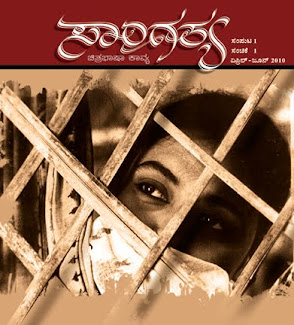MURALIDHARA KHAJANE
In Sandalwood (Kannada film land) releasing a ‘original’ Kannada film is really challenge, as it has now become domain of those involved in canning remakes and claiming subsidy
for the same. To understand how difficult it is to release a ‘original’ Kannada film, one has to meet veteran film director and lyricist C.V. Shivashankar, who kept his ambitious film ‘Kannada Kuvara’ in cans for nearly 14 years.
However, 75-year old Shivashankar, who has a passion for Kannada, is now happy person as his ‘Kannada Kuvara’-which delineates plight of a Kannada teacher is getting released in December. Thanks to a distributor from Mysore, who has taken interest in releasing the film in Mysore, Mandya, Hassan and Kodagu districts.
Mr. Shivashankar has directed over 15 Kannada films, written lyrics and dialogues for more than 60 films in a span of 55 years. He has also produced and directed films including “Mane Katti Nodu”, “Mahadiya Mane”, “Mahatapaswi”, “Namm Ooru” and acted in several Kannada films along with matinee idol Dr. Rajkumar including “Bhakta Kanakadasa”, “Santa Tukaram”. He was trained under noted theatre personality Subbaiah Naidu and assisted noted film director Hunsur Krishnamurthy. He introduced quite a few talents to the film industry like Dwarakish, Kalpana, Tugudeepa Srinivas, Shaktiprasad, Rajesh, Manjunla and many more. He has several awards to his credit including Singanallur Puttasamaiah award.

Despite these credentials, he has waited long to release “Kannada Kuvara”, which he made by investing all his efforts. Speaking to “The Hindu” Mr. Shivashankar said that, “Kannada Kuvara” with Hemanth Kumar, late Balakrishna and Rajanand in the cast was produced in 1993 could not be released, as none of the distributors or exhibitors came forward to distribute the film. However, now Devadatta of Datta Bhushan Enterprises of Mysore has finally come forward to release the film.
He recalls the year 1993, when the then Chief Minister, Veerappa Moily declared “Kannada Jagruthi Varsha” (Kannada awareness year). Inspired by the call given by Mr. Moily, he set out with the subject “Kannada Kuvara” where a young Kannada teacher who goes to villages educating young and old alike about Kannada. Late Balakrishna, popularly known as Balanna in Kannada filmdom has played the role of English teacher in the movie, which is incidentally the last film he acted.
The film was completed with a modest budget of Rs.45-lakh in just six months in 1993. But to no avail, Mr. Shivashankar had to run from pillar to post to get a suitable distributor. The breather here was the film succeeded in getting a subsidy of Rs.3.5-lakh after continuous efforts in 1995. Mr. Shivashankar who had borrowed from his relatives besides investing from his own pocket decided to get rid off the loan and he even succeeded in it. But the film remained in the cans.
His adrenaline shoots up the very moment you speak to him about the language of his existence-Kannada. His eyes shine with the lace of tears suffice to say enough of his unlimited love and compassion towards the language. Truly, his commitment for ‘Chaluva Kannada Nadu’ has made him pen most of the hit songs enriching the language relentlessly. He is well known for his songs, especially patriotic songs. Few of songs such as “Sirivantanadaru Kannada Naadalle Mereve” and “Beladide Noda Bengaluru Nagara” are still relished by Kannadigas.
“The film was made to spread the significance of Kannada and good familial values, when the industry was dominated by films with double meaning dialogues. “If Kannadigas doesn’t watch the movie, it is a great loss to them not for the producer. In fact Dr. Rajkumar had watched the movie thrice and acknowledged me for my love for Kannada and appreciated dialogues of the movie”, he beams with pride. Interestingly crossing the boundary the film was released in Mumbai where it ran for four weeks an achievement, Shivashakar claims.
He regrets that his contribution to Kannada film industry has not been recognized both by Kannadigas and the government. On the present state of Kannada films he says that the situation in Kannada film industry has changed over the years and producers were busy in remaking and dubbing the other language films instead of producing and directing native as well as original Kannada films. Though film industry grew technologically lacks in depth and content, he notes.
He laments that producers and distributors have polluted the environment by offering huge money to exhibitors to release movies. It is time for them to introspect in view of the controversy surrounding the old method of charging theatre rentals on the percentage basis in place of existing weekly rentals, he says.


 3:01 AM
3:01 AM
 saangatya
saangatya















